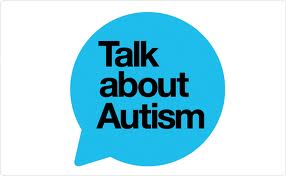Supplements have become an important part of the health industry. There are literally thousands of products on the market that can give your body the added nutrients it needs. People with autism are especially prone to nutritional difficulties and it is important that they take supplements to achieve a balanced nutritional state.
The first step toward addressing autism and supplementation is to adopt a gluten and casein free diet. These proteins have been found to potentially worsen the symptoms of autism. In fact, gluten and casein, in many autistic children, have been found to help the brain produce natural opiates, making foods that contain them practically addictive!
Another important step is the implementation of a balanced and healthy diet. Remember, autistic children are influenced by routines, so if a healthy diet is instituted early and followed, autistic children will likely adhere to it.
It is also important to have the input of a doctor to determine if your autistic child is absorbing the proper amount of nutrients. Simple blood tests can determine nutrient levels and from this data a diet can be successfully adjusted to address any shortfalls. Defeat Autism Now! (DAN!) medical professionals are a good place to start because they have been especially trained to understand the challenges facing autistic children.
There is a list of common supplements that autistic children are often lacking or simply do not have at optimum levels. Selenium, calcium, magnesium, zinc, folinic acids, vitamins C and E, essential fatty acid, cod liver oil, taurine, and various amino acids.
When beginning a regiment of supplements, it is important to work them in slowly. It is equally important to document changes in behavior. Pay close attention to the effects of supplements on your child. Note any differences and prepare to discuss them with your doctor or nutritionist.
In terms of positive and negative effects that can result from the use of supplements, and a change in diet – they will not be easy to miss. Positive changes can include a reduction in the severity of behaviors. Many autistic children can show improvement in managing behaviors and social interaction. It is equally important to note regressions in behavior. If negative behaviors are observed, the supplement added should be reduced or eliminated. For the most part, negotiating the diet and supplementation of an autistic child is a trial and error undertaking. It is recommended that when first purchasing supplements you start with small packages. Buying in bulk can save you money in the long run, but if you buy a ton of a supplement that produces undesired results, you are stuck with useless product.
Should you chose to add supplements to your child’s diet, you will need to d so in a controlled manner. Don’t just dole out supplements on an experimental basis. Work with a doctor or a nutritionist to come up with a specific plan that is geared toward your child’s success. This regiment should include frequent tests for metal toxicity, stool analysis, and tests for various amino acids and peptides.
There is a lot to consider when choosing supplements for your child. This process is very important and can improve the overall quality of their life. Do not rush into the process and make sure you cover all the bases before proceeding. Give supplements time to work. Oftentimes, it takes time for the body to accurately process nutrients and for you to see any changes in behavior.
There are many more resources and information about diagnosing, controlling and treating Autism in, - The Essential Guide To Autism
The first step toward addressing autism and supplementation is to adopt a gluten and casein free diet. These proteins have been found to potentially worsen the symptoms of autism. In fact, gluten and casein, in many autistic children, have been found to help the brain produce natural opiates, making foods that contain them practically addictive!
Another important step is the implementation of a balanced and healthy diet. Remember, autistic children are influenced by routines, so if a healthy diet is instituted early and followed, autistic children will likely adhere to it.
It is also important to have the input of a doctor to determine if your autistic child is absorbing the proper amount of nutrients. Simple blood tests can determine nutrient levels and from this data a diet can be successfully adjusted to address any shortfalls. Defeat Autism Now! (DAN!) medical professionals are a good place to start because they have been especially trained to understand the challenges facing autistic children.
There is a list of common supplements that autistic children are often lacking or simply do not have at optimum levels. Selenium, calcium, magnesium, zinc, folinic acids, vitamins C and E, essential fatty acid, cod liver oil, taurine, and various amino acids.
When beginning a regiment of supplements, it is important to work them in slowly. It is equally important to document changes in behavior. Pay close attention to the effects of supplements on your child. Note any differences and prepare to discuss them with your doctor or nutritionist.
In terms of positive and negative effects that can result from the use of supplements, and a change in diet – they will not be easy to miss. Positive changes can include a reduction in the severity of behaviors. Many autistic children can show improvement in managing behaviors and social interaction. It is equally important to note regressions in behavior. If negative behaviors are observed, the supplement added should be reduced or eliminated. For the most part, negotiating the diet and supplementation of an autistic child is a trial and error undertaking. It is recommended that when first purchasing supplements you start with small packages. Buying in bulk can save you money in the long run, but if you buy a ton of a supplement that produces undesired results, you are stuck with useless product.
Should you chose to add supplements to your child’s diet, you will need to d so in a controlled manner. Don’t just dole out supplements on an experimental basis. Work with a doctor or a nutritionist to come up with a specific plan that is geared toward your child’s success. This regiment should include frequent tests for metal toxicity, stool analysis, and tests for various amino acids and peptides.
There is a lot to consider when choosing supplements for your child. This process is very important and can improve the overall quality of their life. Do not rush into the process and make sure you cover all the bases before proceeding. Give supplements time to work. Oftentimes, it takes time for the body to accurately process nutrients and for you to see any changes in behavior.
There are many more resources and information about diagnosing, controlling and treating Autism in, - The Essential Guide To Autism

.jpg)
.jpg)














.jpg)




.jpg)













